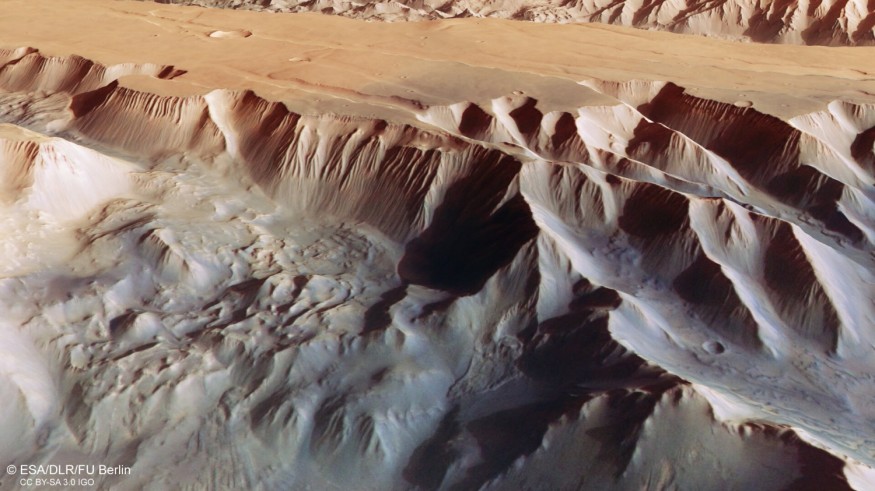The Mars Express Orbiter recently observed a canyon system on the Red Planet that is roughly 10 times longer, 20 times broader, and five times deeper than the Grand Canyon on Earth.
The giant structure is known as Valles Marineris (Mariner Valleys), and it is the solar system's greatest canyon system. According to an ESA press release, the canyon system would reach from Sicily's southernmost point to Norway's northernmost tip if it were on Earth.
Futurism reported that the ESA's Mars Express has been orbiting the Red Planet since 2003 to take pictures of its surface.

ESA Mars Express Shares Photo of Tithonium Chasma and Ius Chasma
The recently published ESA image of the canyon system, taken back in April, depicts a deep sandy-orange gulf framed by towering cliffs and punctuated by impact craters, serving as a sobering reminder of the incredible, solitary magnificence of our solar system.
The 840 km-long (522 miles) Ius Chasma and the 805 km-long (500 miles) Tithonium Chasma are the two primary trenches that define the newly observed system. In some locations, the trenches are more than 4 kilometers deep.
📸 Another section of the image taken by ESA's #MarsExpress on 21 April 2022, part of the latest @esascience release showing ruptures in the martian crust that form part of the Valles Marineris canyon system 👉 https://t.co/3Yl6pyI3LA pic.twitter.com/RNx2fyE9AY
— European Space Agency (@esa) July 21, 2022
On April 21, during the orbiter's 23,123rd orbit around Mars, the High Resolution Stereo Camera captured a picture of the location of the chasms. The orbiter captured photos of the chasmata in natural color to simulate how the formations might seem to the human eye.
The sand on top of Tithonium Chasma seems darker in the photos, indicating that it could have volcanic origins. On top of the building, there are other mounts that are each over two miles tall, close to the sand dunes. The powerful Martian winds, which can erupt into gigantic storms that might destroy spacecraft, are likely to blame for the degraded appearance of the mounds.

There is evidence of a Martian landslide next to the dark dunes, and there also seem to have been landslides on the other side of Tithonium. The incidents may be seen in the lower right corner of the picture.
Other Bizarre Photos on Red Planet From Mars Express
Mars Express has already taken several unsettling and simply bizarre pictures. The mission's High Resolution Stereo Camera (HRSC), responsible for these new images, has revealed much about Mars' diverse surface features.
According to Space.com, the rover captured one of an eyeball-shaped crater on Mars' surface that it released last month. On April 25, an ESA satellite captured a photograph of the unnamed, 18.6-mile-wide (30-kilometer) crater on Aonia Terra, Mars.
With a ground resolution of around 46 feet (14 meters) per pixel, the image itself is a "true color" image, mirroring what would be seen by the human eye if gazing at this part of Mars.
📷 This image from ESA's #MarsExpress shows a network of long grooves and scratches forming part of a giant fault system on #Mars known as Tantalus Fossae 👉 https://t.co/xJnvz8x2wb
— European Space Agency (@esa) April 28, 2022
(NB the crater shown here is about 18 km across 😉) pic.twitter.com/oWNZmeCNQU
Another Futurism report added that images of enormous monster-claw marks went viral in May.
The area, known as Tantalus Fossae, was formed as the volcano they flank grew in elevation, according to Futurism, citing ESA. The space agency posted the image on Twitter showing the tunnels and the roughly 12-mile-wide crater they traverse.
Check out more news and information on Space in Science Times.










